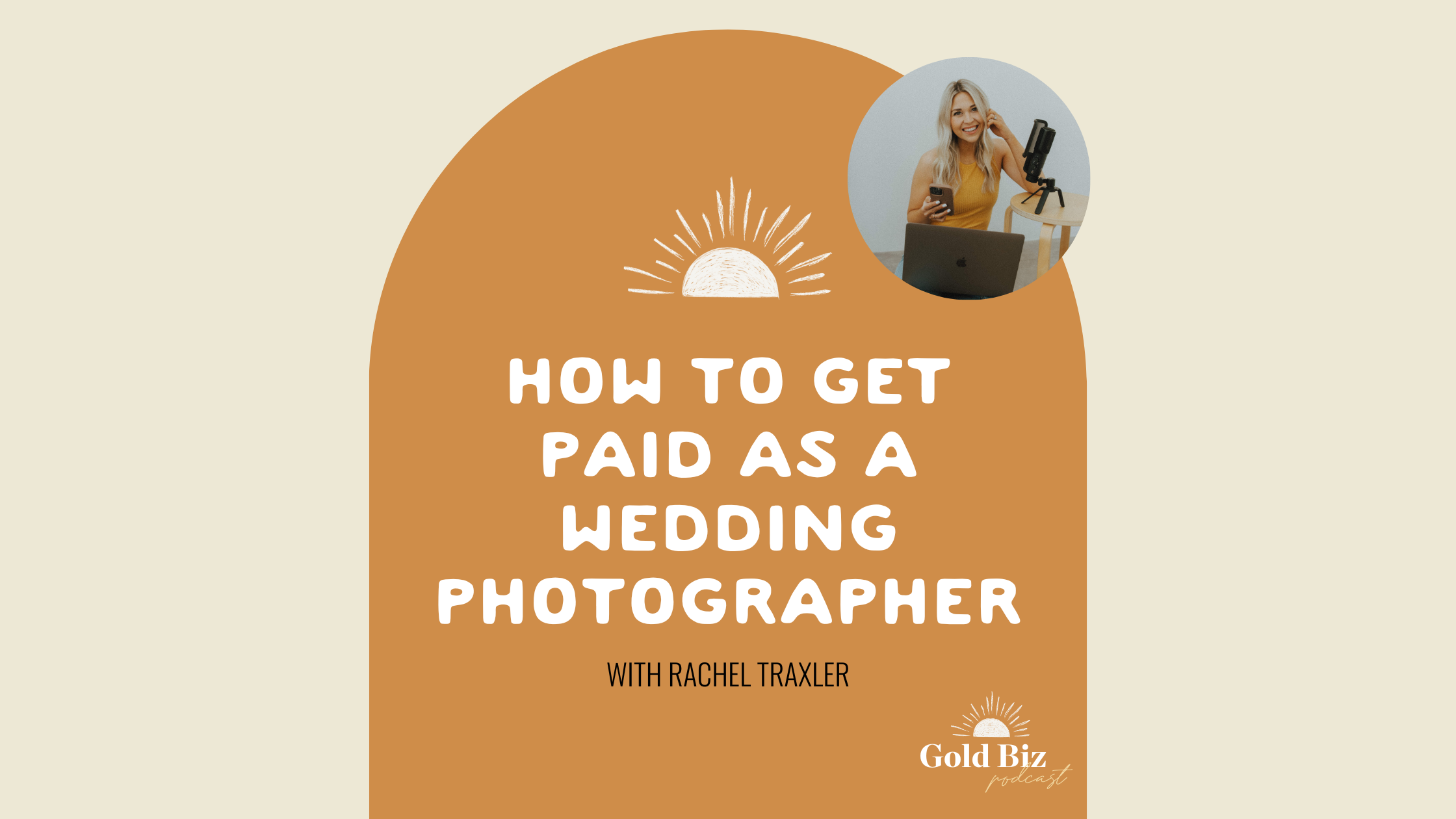Having struggles with getting paid as a wedding photographer? Here we will cover how to feel confident in how you charge your clients.
Have you ever felt awkward when it comes to talking about money or payments? Even as a business owner and an entrepreneur? You are not alone. It can be uncomfortable or maybe you aren’t confident around it. In this post, we will cover how to gain confidence around what you charge, how to go about it, and how to talk about it too. Do not feel ashamed to share your art and talk about collecting the money worth your service.
Getting Paid for Photos
You wouldn’t just walk into a restaurant and expect them to make you a free meal. They’re serving you with their time and expertise. Also serving you with their craft to deliver a service and an experience for you.
It is the same for wedding photographers too or whatever type of entrepreneur you are. We will cover the four things to help you ensure that you are getting paid for your service and that you feel good about it too.
1. The process for asking for payments
Photographers struggle all the time to receive the actual payment from their clients. And maybe they send the contract and the invoice and then they don’t hear back from their clients and do not know what to do. How do I email them back? How do I approach it? They ask themselves, feeling anxious about it. Not wanting to be pushy. All those feelings and emotions begin to surface too. When a potential client doesn’t make the payment for you—that’s an indicator that your process in the way you are presenting the payment options for them isn’t quite clicking.
Something might be off or not working. So start with having a clear and solid way that you are asking for the payments. That way it’ll set your boundaries and expectations around your payments. If you are going to hold the payments for them and what that looks like, etc. It’s also going to help train your potential clients to respect you and your craft. And respect your getting paid and respect the fact that you are doing this either for income or a living.
The way to ask for payments
The first thing is the process of how you are asking for the payments. So this also comes with being confident with the way you’re asking for it and also being clear in the way you’re asking for it too. When it’s within email communication or even on a phone call, anything, no matter how that looks, don’t get buried in the middle of an email that’s too wordy.
They might not simply see it or they might skip over it and since communication is not clear they are not paying. It’s all in the process of how you are asking for the payments. Make it clear to them. Let it be visually clear so they exactly know what the next steps are. Create boundaries and expectations around the payments as well.
2. The process for getting payments
If you feel like you have a good system down, step one can be skipped as you already have a good system for asking for payments. Still, you need help securing them and making sure that the payments are getting submitted.
Look at your process of collecting the payments. Like what does that look like? What communication expectations are you setting around this? Have you already made it clear to them that you’re available for that date and that you’d love to photograph their wedding?
So in their minds, they think they’re good and that they’re booked with you because we all know as photographers, that’s not the case. We know we need a signed contract, we know we need a deposit and a retainer paid before we can make it, you know, an official with people. But if you are just telling them, yes, I’m available and this is it and these are my dates and are my rates for things and we’re good to go, they might just completely forget and think that they’re good to go with you.
So make it clear with all those things? Because some people don’t know that they need those things to be able to be booked. So whether you need to add that to your phone call conversations, your phone call follow-ups, your follow-up emails, your check-ins, your pricing guides, anything like that, whatever that may be, it needs to be talked about, in my opinion, in several locations multiple times.
Add a deadline
People need to hear it, they need to know it, it needs to be clear. All of those things. And I highly suggest that, if you haven’t already, put a deadline on how long the contract and the invoice are good for before they expire.
Perhaps you had a phone call with a potential client and they’re all in, they want to book with you, and they want to solidify things. You say, awesome, I will send over all the information and then we can go from there. Make sure that your offer, your contract, your invoice, or your proposal, however you’re sending it, has a deadline and it’s going to expire in three days.
Ensure you’re also communicating that and making it clear with your client of, okay, here’s your proposal, here’s your contract, and here’s your invoice. Make sure this gets signed and paid within three days. You have 72 hours until it expires. Otherwise, I’m opening up this date because I know it’s a really popular day and I’m getting inquiries for other things.
Be very clear about your expectations
Let them know either way, then you can position it in a way of, I’m going to open it back up then if it’s not signed and paid within the three days that way it’s going to prompt them to take time to talk about it and decide together. And that way they’re going to take action sooner than later. Otherwise, they’ll think they have time to sit on it. We’ll talk with the family this week. We’ll talk this week, etc.
Whatever that looks like, you put a deadline on it, they will find the time to talk and they will find the time to make that decision and make that payment and sign your contract and all that stuff, which will prompt you to get paid and get booked.
3. Where you’re collecting payments
I’m a huge fan of Honeybook! I use it for client communication and contracts and schedules. You can do a ton of things on HoneyBook, but I don’t do payments anymore. I stopped collecting through HoneyBook a few years ago when doing my taxes and prepping. I realized how much money I was losing in the transaction fees with it. So I made the personal switch to doing all of my invoicing through QuickBooks.
So this point on where to collect your payments is to make you aware of your transaction fees. Whatever program you’re using to collect payments, keep track of how much you are spending. And how much you may be missing out on with transaction fees.
And it’s your business so you can decide when it comes to your payments. So if you want to collect checks, you could, if you wanted to do Zelle, if you wanted to do HoneyBook, or if you wanted to do QuickBooks. You can do whatever you want. And, HoneyBook, hands down is the easiest way on both parties’ ends. It provides a really good client experience for them, in my experience.
Ensure that where you’re collecting your payments is simple and easy on your clients. You want to make this process as easy on them as possible. If you want to get paid by your clients, you need to make it simple!
4. Creating contracts around your payments
Step number four to getting paid is creating contracts around your payments. Make sure that you are clear on all of this stuff. So another way to ensure that you’re getting paid as a wedding photographer is to ensure that you have solid verbiage and clauses in your contract stating all of these things. And that way, just make sure that your contract is clear about what the payment schedule looks like for clients. Things like when they’re paying it, how much they’re paying it, how they’re paying it, all the things you need to be clear.
And you can customize this in each contract if it looks different for people. It’s also really important to make note of what will happen if there is payment failure as well. Let them know that! And let them know what legal action would take place if their payment was not paid. Be clear on that.
At the end of the day, you have to remember that although it is all scary when you think about legal stuff, you’re running a business. People know that they’re coming to you for a service. They’re coming to you because they know you offer that. People know that they have to pay for services.
So it’s not a shock to you or them that you’re charging an amount of money for your service. And that there are rules around those payments and those plans and all of that stuff. Be strong and clear in your contract, that’s a good place to start too.
Final thoughts: Getting paid as a wedding photographer
It’s okay to have that confidence and act as a business too when it comes to collecting payments and getting paid and taking action when you need to as well. So these are just my few steps to help ensure that you are doing it with confidence!
Be sure to check out more Gold Biz Podcast episodes here!


comment your thoughts below!